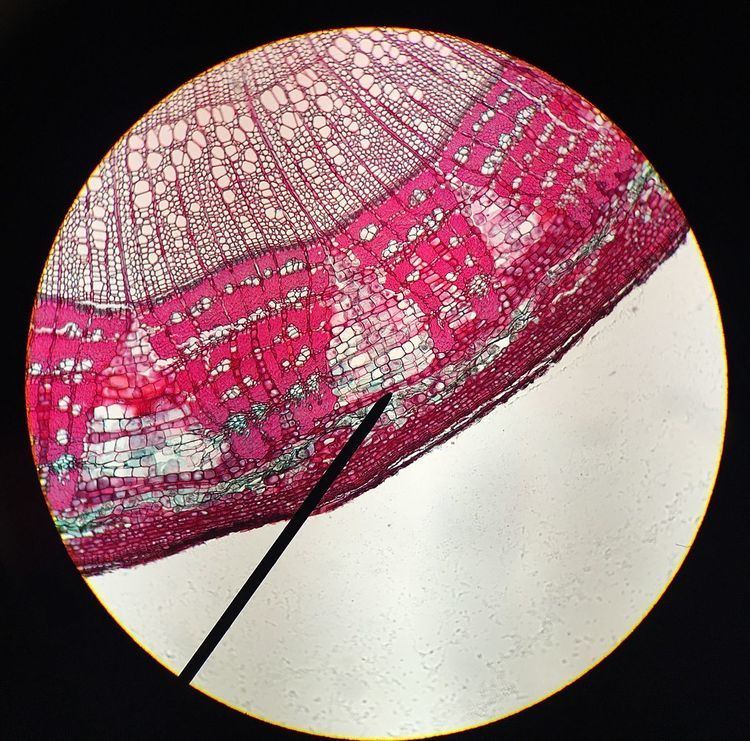 | ||
Cork cambium (pl. cambia or cambiums) is a tissue found in many vascular plants as part of the periderm. The cork cambium is a lateral meristem and is responsible for secondary growth that replaces the epidermis in roots and stems. It is found in woody and many herbaceous dicots, gymnosperms and some monocots (although monocots usually lack secondary growth). is one of the plant's meristems – the series of tissues consisting of embryonic (incompletely differentiated) cells from which the plant grows. It is one of the many layers of bark, between the cork and primary phloem. The function of cork cambium is to produce the cork, a tough protective material.
Synonyms for cork cambium are bark cambium, pericambium and phellogen. Phellogen is defined as the meristematic cell layer responsible for the development of the periderm. Cells that grow inwards from there are termed phelloderm, and cells that develop outwards are termed phellem or cork (note similarity with vascular cambium). The periderm thus consists of three different layers:
Growth and development of cork cambium is very variable between different species, and is also highly dependent on age, growth conditions, etc. as can be observed from the different surfaces of bark: smooth, fissured, tesselated, scaly, flaking off, pie-like, etc.
